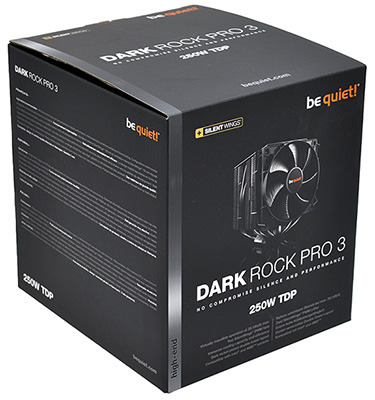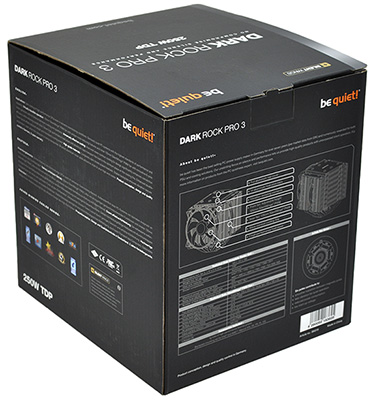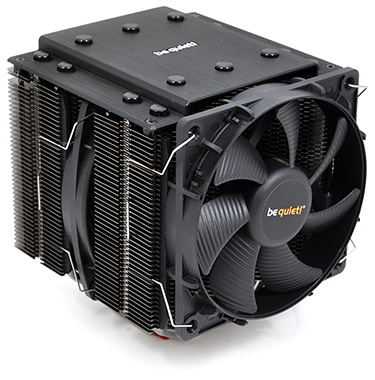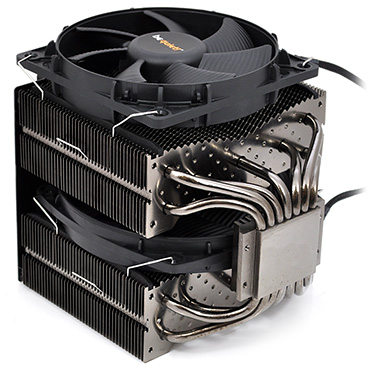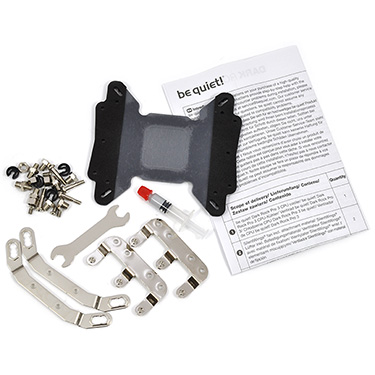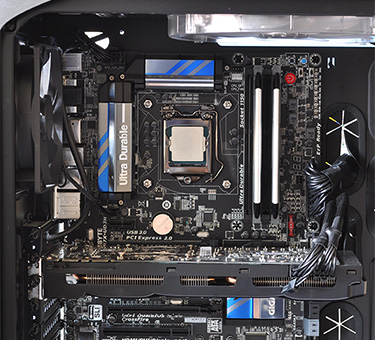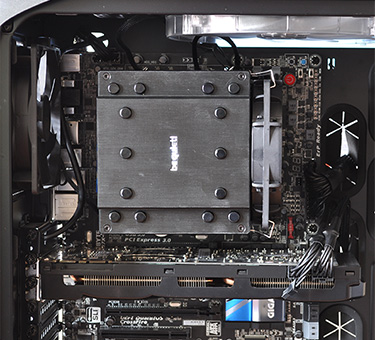Introduction
For a good number of years the Dark Rock Pro 2 has been a go-to solution for enthusiasts seeking a high-end cooler that performs admirably, keeps quiet in use and looks the part. It's a cooler that ticked a lot of the right boxes, though it did carry a couple of provisos; namely tricky installation and a sizeable £60 price tag.
The good news for be quiet! fans is that the German manufacturer hasn't been resting on its laurels and has this year followed-up with the eagerly-anticipated Dark Rock Pro 3. This third-generation cooler, currently priced at a lofty £65, is said to have been "significantly upgraded" to deliver "the perfect balance between cooling and serenity." Let's dive in and see exactly what's on offer.
Brand identity is an area in which CPU cooler manufacturers tend to struggle, but be quiet! has no such problem. The company's self-explanatory name and consistent marketing paint a convincing picture: these are premium products that tout German engineering and ultra-quiet operation. And there's only ever a single colour option: black.
As expected, the Dark Rock Pro 3 arrives in a familiar-looking box that carries a full specification and an emphasis on one particular element - the 250W cooling capacity. That's 30W higher than the outgoing Dark Rock Pro 2, giving users greater scope for overclocking.
It's not very often you get taken aback by a CPU cooler, but credit where it's due: the Dark Rock Pro 3 is a beaut. Measuring 150mm (L) x 137mm (W) x 163mm (H) in size, it's a giant of a cooler whose size and 1.2kg weight is a sign of the performance potential on offer.
Following on from Dark Rock Pro 2, this third-gen derivative continues to employ a dual-stack heatsink design, with a 135mm fan sandwiched in the middle and a 120mm fan attached to the front. Both fans are of the four-pin PWM variety, and a splitter cable is pre-attached to ensure that only one motherboard fan header is required to drive the entire assembly.
Build quality is top-notch throughout, with nickel-plated aluminium fins helping maintain a dark, almost sophisticated aesthetic, and the brushed aluminium lid with heatpipe caps gives the whole thing a quality feel.
This is, in our estimation, one of the best-looking enthusiast coolers on the market, but is it all that different to the Dark Rock Pro 2? At first glance, we still have a dual-stack, twin-fan design with seven 6mm-thick heatpipes attached to a CNC-machined contact plate. The second- and third-gen models are clearly similar in terms of form factor, however there are a few subtle alterations that are worth knowing about.
The Dark Rock Pro 3 has contoured fins carrying small dots on their surface to increase efficiency, the heatpipe arrangement has been tweaked to improve performance, and perhaps most importantly, the fans have been revised as well. This time around, both the 135mm and 120mm fans are outfitted with a quieter six-pole motor that we understand will be a key feature in the SilentWings 3-series fans launched later this year.
All these tweaks and adjustments should result in higher performance and even lower noise levels, but they don't tackle the other outstanding issue: is the Dark Rock Pro 3 going to be any easier to install? Well, nope, we're afraid not, as be quiet! is continuing to use the same mounting system.
A backplate and brackets for the latest Intel and AMD sockets are provided as part of the bundle, along with spare fan clips for an optional third fan and a small tube of thermal paste, but getting this cooler installed requires a good deal of patience. It all starts simply enough - the backplate is attached to the rear of the motherboard using straightforward screws and bolts - but the challenges become evident when it's time to mount the heatsink.
With the relevant mounting brackets fitted to the coldplate, the user needs to attach the cooler to the four standoffs using bolts and a hexagonal spanner. Holding the 1.2kg heatsink in place while you try to do this is frustrating enough, but the real fun starts when you're trying to reach the four tiny bolts at its base.
We've installed our fair share of coolers and can usually do so without having to remove the motherboard from the test platform, but that wasn't the case with the Dark Rock Pro 3. Out came the board, and even then, we had to remove the graphics card and take off the Gigabyte heatsinks surrounding the motherboard's CPU socket just to get access to the bolts.
After all that, and with the cooler in place, there are also memory clearance considerations to take into account. We couldn't install a taller-than-normal Corsair Vengeance Pro memory module in the first DIMM slot, however slots two and four on the Gigabyte board were fine provided we raised the cooler's front fan ever so slightly.
Installation can be tedious, but the cooler does look the part when it's up and running, and as you're about to find out, the performance levels are such that the Dark Rock Pro 3 is probably worth the effort.






